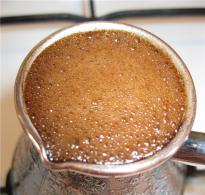Methyl alcohol is oxidized to formic aldehyde. Methanol (methyl alcohol)
Forensic experts from the Indonesian police found traces of methanol in samples of the internal organs of three Russian engineers who died in Indonesia.
Methyl alcohol (methanol, carbinol, wood alcohol) CH3OH is a colorless, easily mobile liquid with an odor similar to that of ethyl alcohol. The raw materials for the production of methyl alcohol are mainly natural gas and oil refinery waste, as well as coking coal, gases from the production of acetylene by pyrolysis of natural gas, etc.
Methanol is obtained industrially by the reduction of carbon monoxide at 400°C under a pressure of 20-30 MPa (megapascal) in the presence of a catalyst consisting of oxides of copper, chromium, and aluminum.
Methyl alcohol is miscible in all proportions with water, alcohols, acetone, benzene; forms azeotropic mixtures (mixtures of liquids that boil at a constant temperature and distill without changing the composition) with acetone, benzene, carbon disulfide, carbon tetrachloride and many others. other compounds.
Until the 1960s methyl alcohol was synthesized only on a zinc-chromium catalyst at 300–400°C and a pressure of 25–40 MPa. Subsequently, the synthesis of methyl alcohol on copper-containing catalysts (copper-zinc-aluminum-chromium, copper-zinc-aluminum, or others) at 200–300°C and a pressure of 4–15 MPa became widespread.
For the first time, methyl alcohol was isolated from the products of dry distillation of wood by Jean Baptiste Dumas and Eugene Peligot, who, comparing its properties with the properties of wine alcohol, gave the first ideas about the class of alcohols (1835). In 1857 the French chemist Marcellin Berthelot synthesized methyl alcohol by saponification of methyl chloride. Synthetic methyl alcohol began to be obtained from 1923.
Methanol is used as a solvent, as well as in the production of formaldehyde, which is used to produce phenol-formaldehyde resins. Large volumes of methanol are used in the production and transportation of natural gas.
It is also used for the production of medicinal substances, as an additive to gasoline and for the production of gasoline in order to save oil raw materials. Processes are being developed to produce acetic anhydride, vinyl acetate, ethanol, acetaldehyde, ethylene glycol, and other large-tonnage petrochemical products from methyl alcohol.
Methanol is the most toxic compound of all alcohols. It is oxidized in the human body much more slowly than ethyl alcohol, and various toxic substances are formed during its oxidation.
Methyl alcohol is rapidly absorbed in the stomach and small intestine. Almost all methanol (90%) is metabolized in the liver by the enzyme alcohol dehydrogenase, resulting in the formation of formaldehyde and formic acid, which are highly toxic. Metabolites of methanol are removed by the kidneys, and a smaller part (15%) is excreted unchanged through the lungs.
Methanol is a strong poison with a predominantly nervous and cardiovascular effect with pronounced cumulative properties. The toxic effect of methanol is associated with depression of the central nervous system, the development of severe metabolic acidosis (changes in the acid-base balance of the body), damage to the retina and optic nerve degeneration.
Acute poisoning by inhalation of vapors is rare. It is dangerous to take methanol inside: 5-10 ml can cause severe poisoning and blindness, and 30 ml can be fatal. Acute poisoning is characterized by a state of slight intoxication, nausea, vomiting, severe headache, a sharp deterioration in vision up to blindness; when the condition worsens - cyanosis (bluish coloration of the skin and mucous membranes), shortness of breath, dilated pupils, convulsions and death from respiratory arrest.
Methyl alcohol (synonymous with methanol; formula CH 3 OH) is the first member of a series of monohydric alcohols. Volatile colorless liquid with the smell of wine alcohol and a burning taste, boiling point 64.509°. Let's well dissolve in water. Easily ignited, methyl alcohol vapors form explosive mixtures with air.
Methyl alcohol is widely used in chemical and methylation, as a part of polishes, for denaturing ethyl alcohol, obtaining formaldehyde, formalin, formaldehyde resins, dyes, for substances, as an antifreeze liquid for radiators, additives to liquid fuels.
Methyl alcohol enters the body through the skin, respiratory tract and digestive tract (when using denatured alcohol and polishes to cause alcohol intoxication). Absorbed quickly, slowly excreted, cumulates. It is oxidized in the body, forming highly toxic compounds - and formic acid.
Methyl alcohol is a nerve and vascular poison with a narcotic effect. Causes a collapse (see) with development of oxygen insufficiency and acidosis. Selectively affects the optic nerve and retina. Early symptoms of poisoning are dilated pupils, blurred vision.
The most dangerous poisoning is methyl alcohol when taken orally. The lethal dose is 30-100 ml, depending on individual sensitivity. Taking 5-10 ml can cause severe poisoning with loss of vision. Symptoms of acute poisoning - and intoxication. In severe cases - difficulty breathing, weak frequent, lack of pupillary response to light. Death from respiratory arrest. In less severe cases, complaints of pain throughout the body, flickering and fog before the eyes, often persistent visual impairment up to changes in the nervous system (neuritis, vegetative dystonia phenomena). The diagnosis is confirmed by the detection of formic acid in the urine. In chronic intoxication - dizziness, flickering in the eyes, transient visual disturbances, conjunctivitis, gastrointestinal disorders, nausea, intoxication.
First aid in case of poisoning with methyl alcohol, it is aimed at removing it from the body, delaying the oxidation of methyl alcohol and combating acidosis. When taken orally - gastric lavage during the first two hours, drinking plenty of water, treatment (sodium bicarbonate - inside 10-15 g, intravenously 5% solution at the rate of 7 ml per 1 kg of body weight until a neutral or slightly alkaline urine reaction appears). Antidote - (reduces the oxidation of methyl alcohol and the formation of toxic conversion products) is given orally at 0.5 ml per 1 kg of body weight every 4 hours for 2-3 days or intravenously 5% solution in 5% glucose (1 l). According to the indications, oxygen, carbogen, artificial respiration.
Prevention: instructing workers on the toxic effects of methyl alcohol and the rules for working with it; container marking; protection of the skin from pollution; ventilation of industrial premises; periodic (1 time per year with the participation of an ophthalmologist, neuropathologist). The maximum permissible concentration of methyl alcohol in the air of working premises is 5 mg/m 3 .
Methyl alcohol is the first in a series of saturated monohydric alcohols. Colorless, easily mobile liquid with a burning unpleasant taste and smell, close to the smell of wine alcohol; t°pl-97.8°; t ° boiling 64.509 °. Miscible in all respects with water and many organic solvents (benzene, acetone, etc.). Easily flammable, methyl alcohol vapors form explosive mixtures with air.
It is found in small quantities in plants (heraclea, chestnut and linden leaves), in essential oils (jasmine). In small quantities found in the blood of healthy people, found in the urine. A modern industrial method for producing methyl alcohol is the synthesis from hydrogen and carbon monoxide:
CO + 2H 2 → CH 3 OH.
When methyl alcohol is oxidized, formic aldehyde (formaldehyde) and formic acid are obtained. Oxidation can be carried out in several stages:
o o o
CH 3 OH → HCNO + H 2 O → HCOOH → CO 2 + H 2 O.
Formaldehyde is also obtained by dehydrogenation of methyl alcohol:
CH 3 OH → HCHO.
In industry, formaldehyde is produced by a combination of both reactions. With alkali metals, methyl alcohol forms methylates:
2CH 3 OH + 2Na → 2CH 3 ONa + H 2 ; with acids - esters:
CH 3 OH + RCOOH → RCOOCH 3 + H 2 O.
Methyl alcohol is used to produce formic acid, formaldehyde, methyl chloride, dimethyl sulfate and other products that are widely used in the pharmaceutical industry. Methyl esters of benzoic, anthranilic and other acids are used as fragrant substances in perfumery.
Methyl alcohol is used in the manufacture of organic dyes, polishes, varnishes, for the denaturation of ethyl alcohol, as an additive to liquid fuels to increase their octane number and as an antifreeze, in microscopic practice - as a fixative in the processing of blood smears.
Toxic action . It has a narcotic and mild irritant effect. It has a complex of extra- and intracardiac effects on the cardiovascular system; extracardiac effect on the myocardium is carried out mainly through b-receptors of the sympathetic nervous system. Perhaps gonadotoxic, embryotoxic and teratogenic effects.Acute poisoning. In acute inhalation poisoning, headache, nausea, dizziness, chest tightness, general weakness, repeated vomiting, impaired coordination of movements are possible; after some time - loss of consciousness, short-term convulsions of an epileptiform nature; after 3-4 days the condition improves. The threshold of olfactory sensation in the air is 0.2, the threshold of the reflex effect on the light sensitivity of the eye is 0.25, and the threshold of influence on the electrical activity of the brain is 0.15 mg/m 3 . According to other data, the odor perception threshold is 85 mg/m 3 , and the irritant threshold upon exposure for 1 min is 285 mg/m 3 . The lethal dose when taken orally is 30 g. Like other esters of methacrylic acid, it gives the water an unpleasant odor and a foreign taste. The odor perception threshold is 0.17 mg/l, the practical threshold is 0.45 mg/l, while the odor of 1–2 points does not disappear from the water for 3 days.
Chronic poisoning. Occupational contact with the substance is often accompanied by a variety of symptoms. The leading place in the clinical picture of chronic intoxication is occupied by symptom complexes of lesions of the nervous, cardiovascular and reproductive systems. The initial stage of the lesion is characterized by astheno-neurotic syndrome with symptoms of vegetative dystonia, which manifests itself mainly in functional disorders of the cardiovascular system. Workers engaged in the production of polymethyl methacrylate for 10 years or more (M. concentration in the air 10–150 mg/m 3) showed vegetative-vascular disorders, pain sensitivity disorders in the distal extremities, and a decrease in the excitability of the vestibular apparatus. Later, signs of astheno-organic syndrome may appear, while some patients may experience vegetative-vascular paroxysms - a sharp headache, dizziness, chills, blanching or redness of the skin, increased heart rate, rise and asymmetry of blood pressure. Perhaps the development of toxic encephalopathy. In many workers in contact with M., a pronounced form of poisoning is changes in vision, smell and hearing. A number of examined patients had complaints similar to mild forms of thyrotoxicosis: weakness, tearfulness, headaches, palpitations, pain in the heart area, sweating, intolerance to high temperatures. Presumably, the effect on the hypothalamic-pituitary system explains the serious violations of the ovarian-menstrual cycle in workers, in particular, the production of plexiglass. The frequency of violations correlates with the level of contamination by the substance and the length of service. The main type of disorders is hypermenstrual syndrome with erratic uterine bleeding. The ability to conceive remains, and it is quite high. They also note a higher gynecological morbidity and more frequent toxicosis of pregnancy in those working with M. With prolonged exposure at the level of MPC r.z. and below, the frequency of stillbirths, asphyxia of newborns and congenital malformations increases among female workers. At high concentrations, spontaneous abortions are observed.
One of the early symptoms of toxic effects on the nervous and endocrine systems is a decrease in sexuality in women and the appearance of sexual disorders in men. In children of mothers who were in contact with M., there was a certain delay in mastering motor reactions and the formation of phrasal speech, there is a high incidence, especially acute respiratory diseases. Workers often have disorders of the gastrointestinal tract and liver. In the production of plexiglass, there are known cases of gastritis with symptoms of secretory insufficiency, accompanied by severe dyspeptic symptoms: belching bitterness, nausea, heartburn, unstable stools, constipation; in workers with more than 15–20 years of experience, changes in the stomach acquire the character of precancerous conditions. With more than 6 months of experience with M., subatrophic rhinitis, pharyngitis, nasopharyngitis, laryngitis and conjunctivitis are recorded.
Examination of workers who had contact with M. for 1-3 years at its concentration in the air, first 800-3000 mg / m 3, and later - 10-80 mg / m 3, revealed a higher mortality rate from cancer of the oral cavity and pharynx , rectum, hematopoietic and urinary organs. Women had higher mortality from breast cancer, men - from cancer of the esophagus and respiratory organs. There is a linear relationship between the dose of a substance and the prevalence of malignant neoplasms. It is believed that the concentration of M. in the air of 1 mg / m 3 provides an acceptable level of oncological risk (10 -6).
local action. M. in liquid form and its vapors cause dermatitis and eczema in workers. In persons having close contact with M., numbness of the fingers, a decrease in the sensory velocity of conduction in the nerves of the fingers were noted.
Individual protection. Industrial filtering gas mask brand A. With a very high concentration in the air and work in enclosed spaces, hose insulating devices with a forced supply of clean air, protective gloves, and overalls should be used.
First aid. The victim must be taken out to fresh air, to ensure peace, warming. Rinse eyes, skin, mouth with water. In case of contact with clothing and skin, sanitize and change clothing. Inside - strong tea, alkaline drink. If swallowed - alkaline drink, induce vomiting. For burns, apply an aseptic bandage. Fats, milk, alcohol are contraindicated! Call an ambulance. Hospitalization is indicated for victims with a manifestation of poisoning
Methyl alcohol (methanol) is a colorless liquid (bp. 64.5 ° C, density 0.79), mixing in all proportions with vault and many organic solvents. OH, and with barium oxide forms BaO 2CH 3 OH crystals. Methyl alcohol almost does not differ in smell and taste from ethyl alcohol. There are known cases of poisoning with methyl alcohol, mistakenly taken instead of ethyl alcohol.
In nature, methyl alcohol is almost never found in the free state. Its derivatives are widespread - essential oils, esters, etc. Previously, methyl alcohol was obtained by dry distillation of wood. Therefore, until now, the crude methyl alcohol obtained by the dry distillation of wood is called wood alcohol. Currently, several industrial synthetic methods for producing methyl alcohol are used.
Application. Action on the body. Methyl alcohol is widely used in industry as a solvent for varnishes, paints, as a starting material for the production of methyl chloride, dimethyl sulfate, formaldehyde and a number of other chemical compounds. It is used for the denaturation of ethyl alcohol, is part of the antifreeze.
Methyl alcohol can enter the body through the alimentary canal, as well as with inhaled air containing vapors of this alcohol. In small quantities, methyl alcohol can penetrate the body through the skin. The toxicity of methyl alcohol depends on the circumstances of the poisoning and individual susceptibility. Under the influence of methyl alcohol, damage to the retina and optic nerve occurs, and sometimes incurable blindness occurs. A number of authors explain the appearance of blindness not by the action of methyl alcohol, but by the action of its metabolites (formaldehyde and formic acid). Methyl alcohol disrupts oxidative processes and acid-base balance in the cells of the intestines. The result is acidosis. Poisoning with methyl alcohol in some cases ends in death. The risk of blindness occurs after taking 4-15 ml of methyl alcohol. The lethal dose of ingested methyl alcohol is 30-100 ml. Death occurs as a result of respiratory arrest, swelling of the brain and lungs, collapse or uremia. The local action of methyl alcohol on mucous membranes is stronger, and the narcotic effect is weaker than that of ethyl alcohol.
The simultaneous intake of methyl and ethyl alcohols in the body reduces the toxicity of methyl alcohol. This is due to the fact that ethyl alcohol reduces the rate of oxidation of methyl alcohol by almost 50%, and therefore reduces its toxicity.
Metabolism. Methyl alcohol that enters the body is distributed between organs and tissues. The greatest amount of it accumulates in the liver, and then in the kidneys. Smaller amounts of this alcohol accumulate in the muscles, fat and brain. The metabolite of methyl alcohol is formaldehyde, which is oxidized to doformic acid. Part of this acid decomposes into carbon(IV) oxide and water. Some unmetabolized methyl alcohol is excreted in exhaled air. It can be excreted in the urine as a glucuronide. However, small amounts of unchanged methyl alcohol can also be excreted in the urine. Methyl alcohol is oxidized in the body more slowly than ethyl alcohol.
When making a conclusion about methyl alcohol poisoning, it should be borne in mind that the body (normally) may contain 0.01-0.3 mg% methyl alcohol and about 0.4 mg% formic acid.
Methyl alcohol detection
Given the volatility of methyl alcohol during its isolation from biological material by steam distillation, the distillate receiver must be cooled with cold water or ice. The resulting distillate in most cases contains minor amounts of methyl alcohol. Therefore, this distillate is subjected to two or three times distillation with a reflux condenser (see Chapter IV, § 5). Only after reflux in the distillate determine the presence of methyl alcohol.
To detect methyl alcohol, a limited number of reactions to this alcohol are used. Most of them are carried out after converting it to formaldehyde. The presence of methyl alcohol can be proved by the reaction with salicylic acid.
The reaction of the formation of methyl ester of salicylic acid. 1 ml of distillate or other test solution is added to the test tube, 0.03-0.05 g of salicylic acid and 2 ml of concentrated sulfuric acid are added, and then the mixture is carefully heated on a burner flame. In the presence of methyl alcohol in the test solution, a characteristic smell of methyl ester of salicylic acid is felt:
With this reaction, another 0.3 mg of methyl alcohol can be detected in the sample.
This reaction is not specific, since under the above conditions, ethyl alcohol with salicylic acid forms ethyl ester, the smell of which resembles the smell of salicylic acid methyl ester.
Oxidation of methyl alcohol. Most of the detection reactions of methyl alcohol are based on its oxidation to formaldehyde and the determination of the latter using staining reactions.
Before proceeding with the oxidation of methyl alcohol to formaldehyde, it is necessary to check the presence of this aldehyde in the test solution.
For the oxidation of methyl alcohol to formaldehyde, potassium permanganate or other oxidizing agents are used:
5CH 3 OH + 2KMnO 4 + 3H 2 SO 4 ---> 5HCHO + 2MnSO 4 + K 2 SO 4 + 8H 2 O.
When manganese ions interact with an excess of potassium permanganate, manganese (IV) oxide can be formed:
3Mn 2+ + 2MnO 4 - + 2H 2 O ---> 5MnO 2 + 4H +.
To bind the excess of potassium permanganate and manganese (IV) oxide, sodium sulfite or other reducing agents (sodium hydrosulfite, oxalic acid, etc.) are added.
Several variants of the methyl alcohol oxidation reaction have been described. The choice of these options depends on the content of methyl alcohol in the sample and on the volume of the test solution.
1. To 2 ml of the test solution or distillate add 1 ml of potassium permanganate solution containing phosphoric acid (a mixture of 100 ml of 3% potassium permanganate solution and 15 ml of 87% phosphoric acid solution). 1 ml of a 5% solution of oxalic acid in dilute (1:1) sulfuric acid.
2. A drop of the test solution is added to the microtube, a drop of a 5% solution of phosphoric acid and a drop of a 5% solution of potassium permanganate are added. If an insoluble brown precipitate of manganese (IV) oxide appears in the test tube, then a drop of a solution of phosphoric acid and a little sodium hydrosulfite are added.
Detection of methyl alcohol after its oxidation. After the oxidation of methyl alcohol to formaldehyde, the latter is determined by reactions with chromotropic acid, fuchsin-sulphurous acid and sresorcinol. These reactions are described above (see Chapter IV, § 7).
Of these reactions, the reaction with chromotropic acid is specific for methyl alcohol (after its oxidation). Ethyl, propyl, butyl, amyl and isoamyl alcohols do not give this reaction. Some substances containing alcohol groups, when performing this reaction, may give a yellow or brown color.
Microdiffusion method. The detection of methyl alcohol using the microdiffusion method is given above (see Chapter III, § 3).
Preliminary test for methyl and ethyl alcohol in urine and blood. In urine and blood, methyl alcohol can be detected using the preliminary test described below. To 1 ml of urine add 1 ml of 10% potassium dichromate solution in 50% sulfuric acid solution. The appearance of a green color indicates the presence of methyl and ethyl alcohols in the urine. In the presence of 150 mg% of these alcohols in the urine, the color appears within 10 seconds, and at amounts exceeding 75 mg%, within 45 seconds.
Since some other alcohols and compounds capable of being oxidized by potassium dichromate give such a reaction, the positive results of this reaction must be confirmed by other preliminary tests, which are described below.
Additional research:
a) 5 ml of blood or 10 ml of urine are introduced into the apparatus for the distillation of toxic substances with water vapor and distillation is carried out. The first 5 ml of distillate are collected, in which the presence of methyl or ethyl alcohol is determined. For this purpose, 1 ml of the distillate is mixed with 1 ml of a 50% sulfuric acid solution and 0.1 g of sodium salicylate, and then the mixture is heated in a water bath. The appearance of a characteristic odor of methyl salicylate or ethyl salicylate indicates the presence of the corresponding alcohol in the distillate;
b) to 2 ml of the above distillate add 1-2 drops of a 10°/o-th solution of sodium hydroxide, and then a few drops of a solution of potassium iodide until a persistent yellow color appears. The mixture is then heated on a water bath. The formation of yellow crystals or the appearance of a specific smell of iodoform indicates that ethyl alcohol is contained in the urine or blood. This reaction does not interfere with the presence of methyl alcohol in the distillate. Acetone gives the same reaction as ethyl alcohol;
c) add 2 ml of distillate to the test tube and add 5°/o-th solution of potassium permanganate drop by drop until the permanganate stops decolorizing. Then a 10% solution of oxalic acid is added dropwise to the test tube until the solution becomes colorless. After that, another drop of oxalic acid solution is added. 0.1 g of chromotropic acid is added to this liquid, and 1.5 ml of concentrated sulfuric acid is carefully poured along the walls of the test tube so that the acid gets under the distillate and does not mix with it. The appearance of a red or purple color at the interface between two liquids indicates the presence of methyl alcohol in the distillate.
This preliminary test is used to detect methyl and ethyl alcohol in urine and blood.
Methyl alcohol (methanol) is a colorless liquid (bp 64.5 ° C, density 0.79), miscible in all proportions with water and many organic solvents.
Methyl alcohol can enter the body through the alimentary canal, as well as with inhaled air containing vapors of this alcohol. In small quantities, methyl alcohol can penetrate into the body and through the skin. The lethal dose of methyl alcohol taken orally is 30-100 ml. Death occurs as a result of respiratory arrest, swelling of the brain and lungs, collapse or uremia. The local effect of methyl alcohol on the mucous membranes is stronger, and the narcotic effect is weaker than that of ethyl alcohol.
The simultaneous intake of methyl and ethyl alcohols in the body reduces the toxicity of methyl alcohol. This is due to the fact that ethyl alcohol reduces the rate of oxidation of methyl alcohol by almost 50%, and, consequently, reduces its toxicity.
Metabolism. Methyl alcohol that enters the body is distributed between organs and tissues. The greatest amount of it accumulates in the liver, and then in the kidneys. Smaller amounts of this alcohol accumulate in muscle, fat, and the brain. The metabolite of methyl alcohol is formaldehyde, which is oxidized to formic acid. Some of this acid decomposes into carbon monoxide (IV) and water. Some unmetabolized methanol is excreted in exhaled air. It can be excreted in the urine as a glucuronide. However, small amounts of unchanged methyl alcohol may also be excreted in the urine. Methyl alcohol is oxidized in the body more slowly than ethyl alcohol.
Methyl alcohol detection
Given the volatility of methyl alcohol during its isolation from biological material by steam distillation, the distillate receiver must be cooled with cold water or ice. The resulting distillate in most cases contains small amounts of methyl alcohol.
Therefore, this distillate is subjected to a double or triple distillation with a reflux condenser. Only after reflux in the distillate determine the presence of methyl alcohol.
The reaction of the formation of methyl ester of salicylic acid. In the presence of methyl alcohol in the test solution, a characteristic smell of salicylic acid methyl ester is felt:
Oxidation of methyl alcohol. Most of the detection reactions of methyl alcohol are based on its oxidation to formaldehyde and the determination of the latter using staining reactions.
For the oxidation of methyl alcohol to formaldehyde, potassium permanganate or other oxidizing agents are used:
5CH 3 OH + 2KMnO 4 + 3H 2 SO 4 ---> 5HCHO + 2MnSO 4 + K 2 SO 4 + 8H 2 O.
When manganese ions interact with an excess of potassium permanganate, manganese (IV) oxide can be formed:
3Mn 2+ + 2MnO 4 - + 2H 2 O ---> 5MnO 2 + 4H +.
To bind the excess of potassium permanganate and manganese (IV) oxide, sodium sulfite or other reducing agents (sodium hydrosulfite, oxalic acid, etc.) are added.
Detection of methyl alcohol after its oxidation. After oxidation of methyl alcohol to formaldehyde, the latter is determined by reactions with chromotropic acid, fuchsin-sulphurous acid and resorcinol.
Of these reactions, the reaction with chromotropic acid is specific to methyl alcohol (after its oxidation). Ethyl, propyl, butyl, amyl and isoamyl alcohols do not give this reaction. Some substances containing alcohol groups may give a yellow or brown color when performing this reaction.






